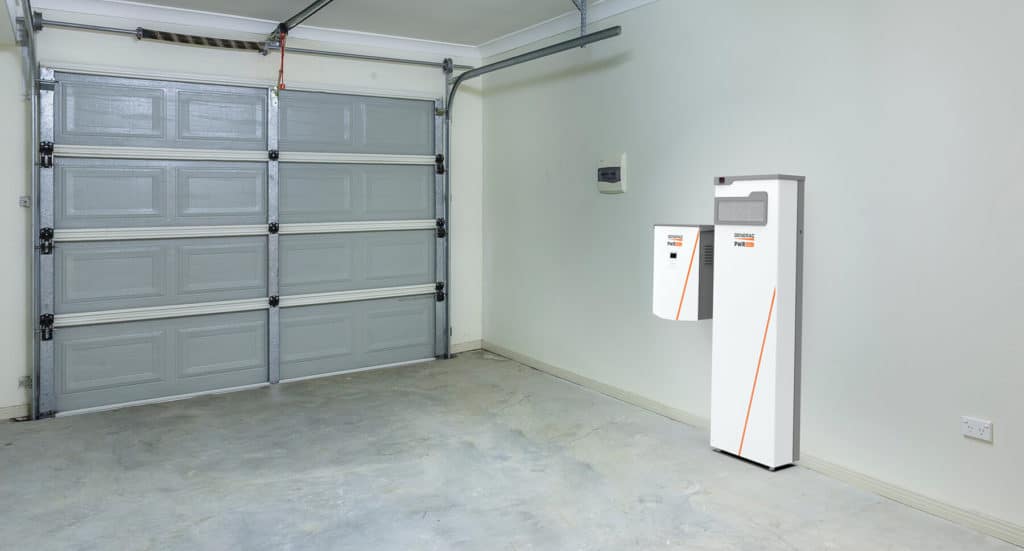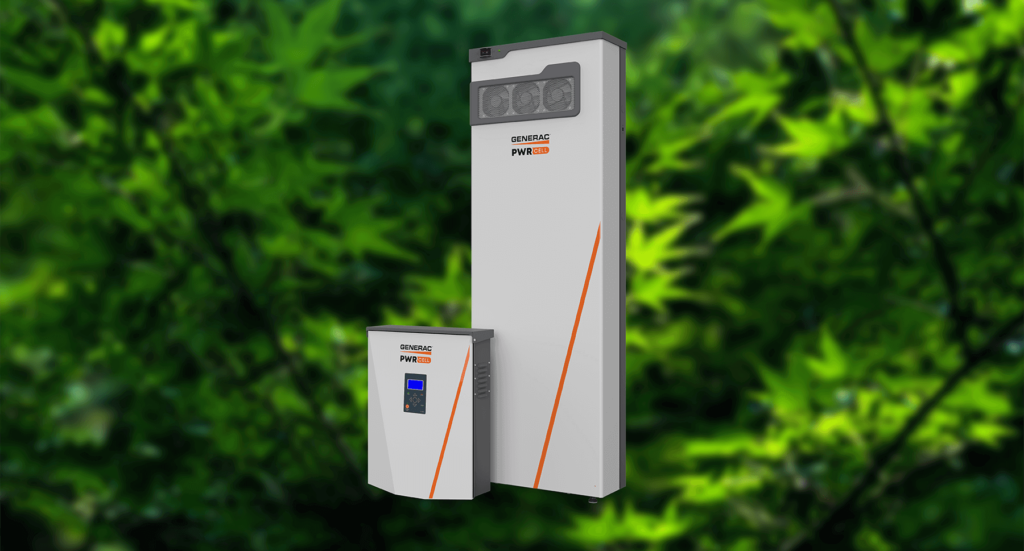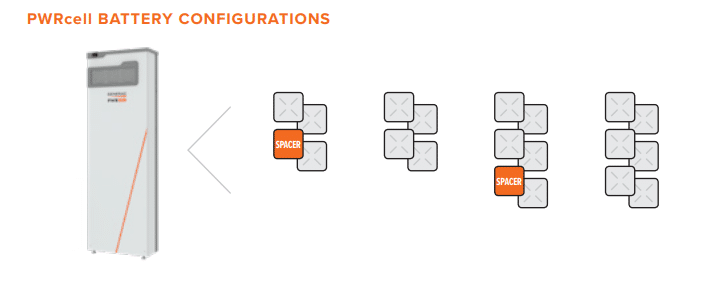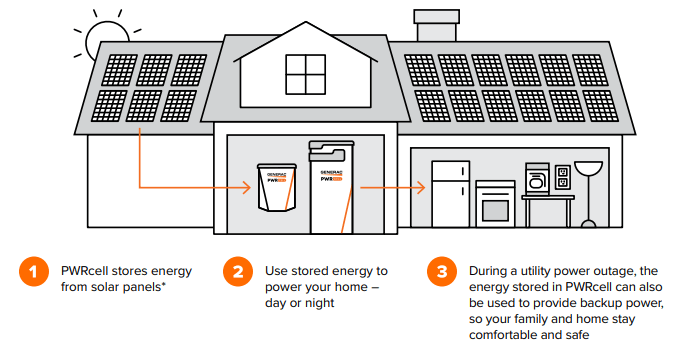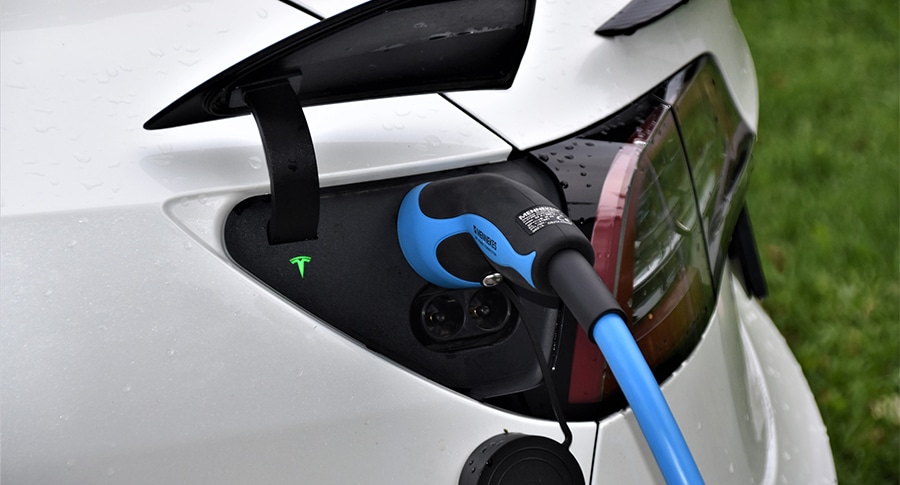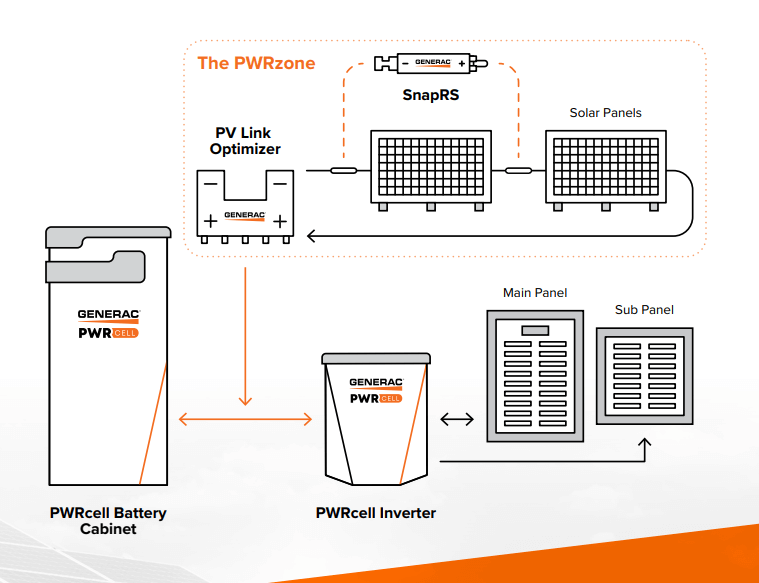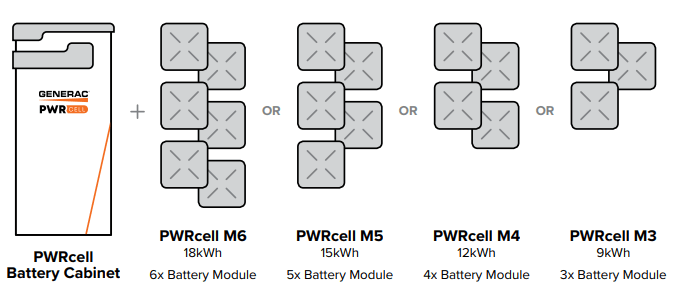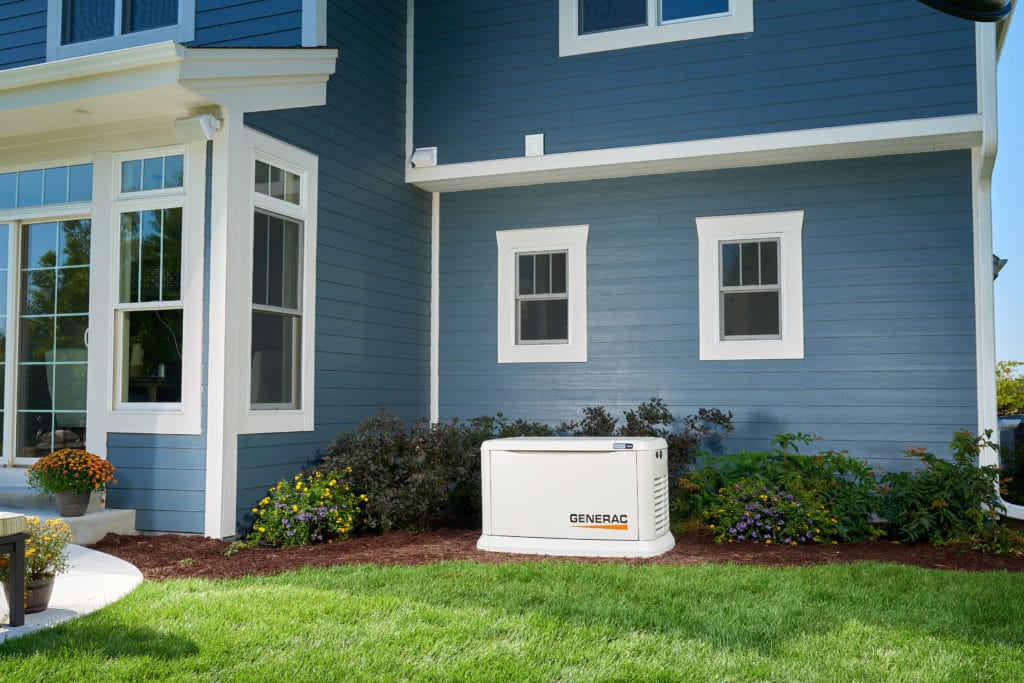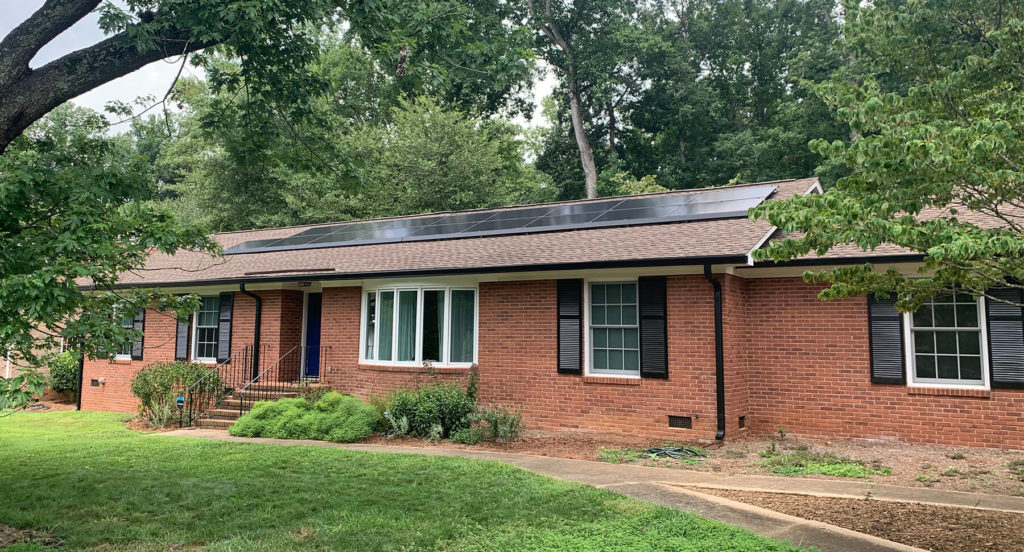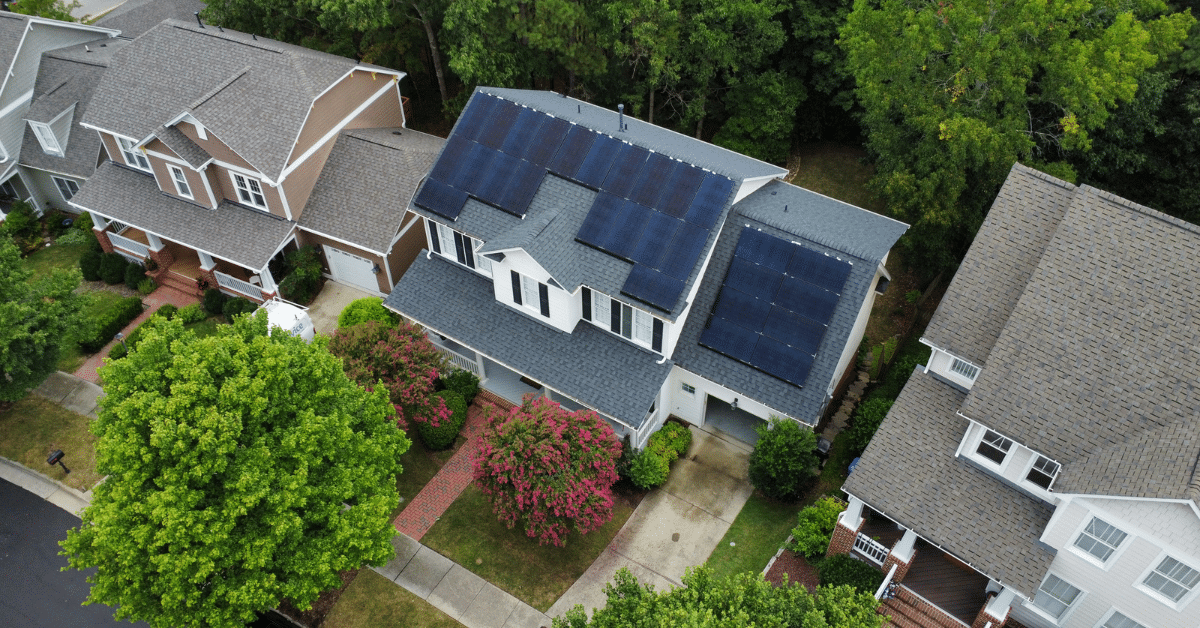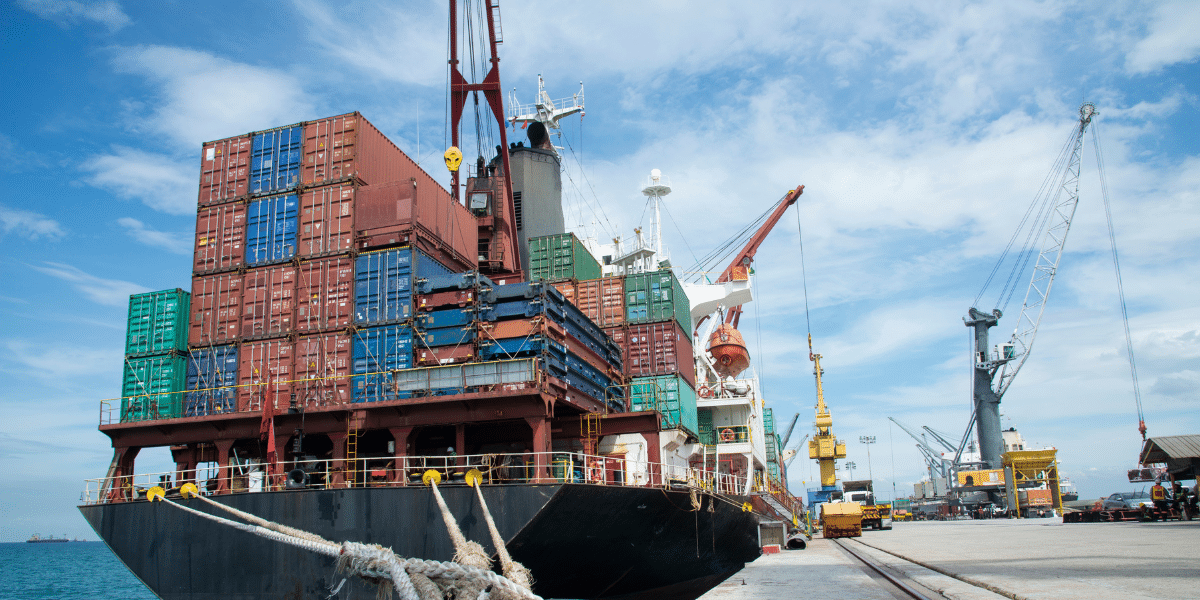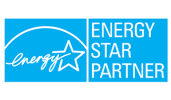- Alyssa Hardbower
- Lindsay Brecheisen
- May 12, 2021
- 9 Minute Read
Topics in This Article
PWRcell Basics
The Generac PWRcell is a name you’ll be hearing more of, especially as battery storage becomes more of a mainstream focus. As a Generac PWRcell provider and Certified Tesla Powerwall installer, we can tell you firsthand there are certainly pros and cons to each system, depending on your energy goals.
In this post, we’re excited to dive into the benefits of a PWRcell and what makes this piece of battery technology unique. First, let’s start with the basics:
Your Guide to Generac PWRcell
What is a PWRcell battery?
The Generac PWRcell™ is a battery storage system that can store solar energy to power your home and provide backup power during a utility power outage.
The PWRcell utilizes the same lithium-ion phosphate technology that most residential solar battery system manufacturers, like Tesla and Sonnen, are using. As far as chemistry, the PWRcell is the same as other batteries out there. The biggest difference is in how it’s designed.
Image credit: Generac Power Systems
What is Generac's history in backup power?
Founded in 1959, Generac is most well known for their backup generator products. After acquiring Pika Energy in 2019, Generac bridged into the energy storage market with their PWRcell (pronounced Powercell) battery storage solution. While Generac doesn’t have a solar panel or solar roof shingle product, they have been in the business of backup power for over 60 years and command 70% of generator market share.
Bottom line — Generac knows backup power. If you’re looking for tried and true, proven security, safety, and durability, Generac is your go-to battery storage brand.
Generac PWRcell Technical Specs
The Generac PWRcell smart battery system is designed to be more modular and scalable than the other battery options currently on the market.
Each PWRcell consists of one 22″ x 10″ x 68″ battery cabinet that can house up to six individual battery modules within. Up to two PWRcell cabinets can be stacked together, for a max capacity of 12 battery modules. This allows you to easily customize and configure each PWRcell in 3kWh increments from a minimum of 9kWh to max 36kWh, based on your specific home backup power needs.
Check out the full product fact sheet to see all of the Generac PWRcell’s specs.
How does a PWRcell work?
The PWRcell battery is installed together with a solar system. Energy generated by the solar system will first be stored in the battery then the rest of the energy will flow through the solar system’s inverter to be used in the home. Once all your home’s energy needs are taken care of and battery charged, any extra electricity will flow to the grid as a credit.
Can a PWRcell back up your whole house?
With the Smart Management Modules, you can backup a whole home with a single PWRcell. This means homeowners can set certain loads as priorities so they do not overload the battery system.
Instead of having to use a third-party to do load shedding or buy another cabinet, Generac’s solution is to put more circuits on the battery, while ensuring that there are priorities for the most important loads come on. For example, homeowners can prioritize their refrigerator, well pump, and lights to come on first before allowing lower priority loads like HVAC to come on depending on the amount of amperage left in the battery.
What is load shedding?
Load shedding refers to the process of prioritizing loads / turning off unnecessary electrical loads to reserve power for high priority / essential equipment during grid failure or a power shortage. Turning off these low-priority loads allows the higher priority loads to run longer without overloading the system.
Can you power an electric vehicle with a PWRcell?
If you have a Tesla EV, the Powerwall will be your go-to battery storage option. This is because the Powerall can communicate with your Tesla EV during a grid outage to manage charging your car off the battery vs providing backup power to the rest of your home. If you have a Nissan Leaf or other electric vehicle, either the Powerwall or PWRcell will work fine.
Where can a PWRcell be installed?
Similar to the Tesla Powerwall, the Generac PWRcell can be installed either inside or outside. Based on NC Code specifications, battery storage units cannot be installed in finished conditioned space (like your dining room or bonus room/man cave) but must be readily available, or easy to access. The most common areas we install backup battery storage is in a garage, mechanical room, or outside the home.
Wi-Fi Requirements
To enable the PWRview monitoring app for the PWRcell, the battery will need to have a stable wi-fi connection.
Generac PWRcell warranty
The Generac PWRcell comes with a standard 10 year, 70% warranty. This means, after 10 years, the battery is guaranteed to perform at 70% of its original performance.
Home Battery Recycling
The end of life picture for large-format standalone lithium ion batteries like the PWRcell is still developing. Manufacturers like Tesla are working on in-house recycling programs, while the US DOE is leading research on this as well. The good news is that we already know these battery materials can be recycled repeatedly, the biggest issue facing the industry is finding a cost effective way to recover the material.
Benefits of a PWRcell
As a battery storage solution, the benefits of a PWRcell go beyond the basics of home energy security, smart technology, advanced energy monitoring, and extra savings when paired with solar. Here’s what makes the PWRcell system unique:
Maximizing Self-Reliance
A Generac PWRcell battery is a great solution for people who are planning on running their battery to supply their home’s energy all day, every day.
If you’re trying to maximize your self-reliance, and want to use the battery during the day and recharge it every night — either because of utility interconnection policies or your own energy goals — a PWRcell is a great fit for you because of its high efficiency (more on this below).
If you’re only ever planning to use a battery as a backup for when the grid goes down, the Tesla Powerwall might be a better solution.
One System Approach
Generac prides itself on their seamless battery + solar product that utilizes a Generac branded inverter and Generac branded batteries with your solar panel of choice.
Other battery storage options on the market, like Tesla Powerwall, use a third party inverter and optimizer manufacturer (we recommend the SolarEdge inverter) which is paired with a Tesla Gateway, Tesla Powerwalls, and your preferred solar panels.
This is why the Generac PWRcell is currently sold as part of a new solar system, whereas others, like the Tesla Powerwall, can be sold as part of a new solar system or as a retrofit to an existing one.
So, if someone calls us and says, “I have solar, and I want to get battery backup,” right now, our answer is a Tesla Powerwall, 100%. If someone else calls and says, “Hey, I want to put up solar and batteries,” we might recommend a Generac PWRcell system because of availability and customization options.
Customizable Modular Design
As far as chemistry, the Generac PWRcell offers the same technology as other batteries out there. From a design standpoint, the PWRcell’s unique modular design allows for more customizable configuration with a battery cabinet that can fit up to six individual battery cells to expand system capacity. This is a huge difference from the Tesla Powerwall where your biggest option to expand your battery capacity is to purchase another Powerwall unit.
That being said, we’re only offering a fully loaded PWRcell cabinet with six cells since filling up a battery cabinet is going to be the best value at this time. If a fully loaded PWRcell packs too much punch for your energy needs, we also offer the Powerwall.
Higher Round Trip Efficiency
The Tesla Powerwall works as an alternate current (AC) coupled system, which means the energy from the solar panels goes through an additional inverter process before getting to the battery. This additional step results in a 7% efficiency loss, but at the same time, it allows the Powerwall to be a great option for a retrofit with an existing solar system.
The Generac system, however, feeds the solar energy directly into the battery without the additional conversion — this is called a direct current (DC) coupled system — which allows for a 7-10% efficiency gain, compared to the Tesla Powerwall.
Smart Management Modules
The Generac system has what the Tesla powerwall system does not — a product called the Smart Management Module — which you can have installed under the breaker panel for each high voltage circuit you want to prioritize. Up to 8 Smart Management Modules can be installed, allowing you to back up your whole home by setting priorities for your PWRcell.
For example, if you have three high voltage circuits like a water pump, HVAC, and refrigerator, you would have three Smart Management Modules installed. This will allow you to set priorities (1-3) for which loads to come on while also being able to select which modules don’t need to come on when there is a power outage .
Cool Future Plans for Generac Generators
Generac is obviously a well-known name in backup power, some consider them the name in backup power — especially when it comes to home generators. This paves the way for a cool vision of the future where the Generac PWRcell battery can communicate with an on-site Generac generator.
For those customers who want to have double protection during hurricane season and when the power goes out, this idea would allow them to recharge a Generac PWRcell battery with their Generac generator. So when your battery runs dry, you can say, “OK, when the PWRcell reaches 20%, kick on my Generac generator to recharge for an hour, then turn the generator back off.” This option gives homeowners a lot more freedom in managing their power and energy security when events like what we saw in Texas earlier this year happen unexpectedly.
The efficiencies of multiple pieces of Generac’s equipment being able to communicate is something that’s on their roadmap. Engineering plans are currently underway, but a definitive timeline is still under wraps. We’ll be sure to update this post as soon as we hear any exciting news!
Generac PWRcell + Solar
If you’re considering a home battery storage solution in North Carolina, it makes a lot of sense to also consider solar power. Let’s dive into 3 key Generac PWRcell solar system questions:
Do you have to install a PWRcell with solar panels?
Right now, the PWRcell needs a DC power source, so it technically can’t be installed without a solar system. Since a Tesla Powerwall is AC coupled, it can certainly be installed with solar or without. But, we don’t quite recognize the value of installing battery storage without solar for the average homeowner.
At the end of the day, no matter what battery storage solution you go with, we would strongly recommend that you have solar tied to either system. Because once the power is out and the batteries are dead, you’ve got no way to recharge it without a solar system. So you’re spending thousands of dollars for a day’s worth of power. But with solar, obviously the batteries can recharge, creating an indefinite power loop that will last you through the storm.
Will my electric utility allow a battery?
Yes. Electric utilities are often confused by batteries, but we have not seen one that would deny the application of a battery. Certain utilities will require different time of use rates which could impact how you decide to use your battery and how many batteries you get.
Every utility is going to have different requirements about what you can and cannot do if you have solar plus batteries. Schedule a call to find out your utility’s requirements, we can help navigate your utility’s battery + solar policies!
Free Solar Power 101 Guide
Can you add a PWRcell to an existing solar system as a battery addition?
Today, no. In the next few months, likely. Generac is developing their AC coupled battery which will allow you to tie in the PWRcell to an existing solar system. We don’t have an exact launch date yet, but we’ll update this blog as we get more information.
The one caveat is if you have an existing solar system with a Generac inverter, then absolutely you can install a Generac PWRcell battery. However, the Generac inverter costs more than the solarEdge inverter so most homeowners typically go with solarEdge if battery storage isn’t on their radar. But, if you like the Generac name and you’re not quite ready for batteries, that’s certainly an option.
How much solar energy can you store in one PWRcell?
The answer is, a crap ton. In a typical solar + storage system, the limiting factor is how much power can go through the inverter at any given time.
Generac currently makes a 7.6kW inverter, so we’ll compare that to a solarEdge 7.6kW inverter. With a solarEdge inverter, the max that’s going to flow to that inverter is 7.6kW since the solar energy will flow through the inverter before hitting the battery. So you really don’t want to put beyond an 8.5kW solar array on there because you’re really going to peak out around 7.6kW.
The difference with the Generac system, because solar energy can feed directly to the battery first before the inverter, is that you can put a 14kW solar array on a 7.6kW inverter. How does this work? In the morning, the sun comes up, by noon, the system is producing 14kW. Some of that 14kW will be going directly into the PWRcell battery, with the remaining 7.6kW going through the inverter.
Ultimately, you can put a bigger solar array on a Generac system because the DC solar power can go to both the battery and to the inverter, whereas with the Tesla plus solarEdge system, that SolarEdge inverter becomes your limiting factor. Bottom line, we’ll help you figure out which system is better for your energy needs to maximize your investment based on your energy goals.
You’ll also be able to watch your home’s energy consumption, solar production, and battery use all through Generac’s PWRview monitoring app.
PWRcell Cost & Timing
Cost and timing, two very important factors for your PWRcell project. Dig into the details on finances and supply:
How much does a PWRcell cost?
Assuming you had a Generac inverter already installed with a solar system and you wanted to put in an 18kWh PWRcell (1 cabinet fully loaded with 6 battery modules), pricing would come around $15,000 to $17,000 depending on load control add-ons.
Don’t forget, both solar and batteries are eligible for the 30% Federal Tax Credit for solar. If you are a Duke Energy customer, you may also be eligible for the $9,000 PowerPair incentive when you install a new solar+battery system.
With a Powerwall coming in at $12-13k per Powerwall, the cost of 1 PWRcell is right in the middle between 1 and 2 Powerwalls. Keep in mind, the PWRcell comes with more storage than one Powerwall, but less than two. Ultimately, you can have the same amount of circuits on one Generac PWRcell battery as you would for two Powerwalls because you have the load control feature.
At the end of the day, that’s Generac’s selling point — Don’t spend more money on more storage when you don’t necessarily need more storage. You just want to be able to put more circuits on there, and if we control them properly so they don’t all come on the same time, you’re good to go.
Image credit: Generac Power Systems
What is the wait time to get a PWRcell installed?
If you’ve been following Tesla, you’ll know that the Powerwall is in high demand, resulting in supply delays. While Tesla is notorious for having supply chain issues, Generac has been doing backup power for a while now (since 1959), so they know the game. Of course, there is always the potential for supply delays, but we’d be surprised if we see anything to the extent of what we’ve experienced with the Powerwall.
It is important to remember that installation of a battery storage system requires design and permits so it does take a couple weeks at a minimum to get everything sorted. In most circumstances, the PWRcell will be installed with your solar system, so we will schedule those installations to happen together.
What's Next?
The Generac PWRcell has brought a reliable and trusted option to the innovative game of battery + solar technology. Like the Tesla Powerwall, PWRcell gives homeowners the ability to meet whatever their energy goals may be — like maximizing solar savings or gaining more energy independence — while also being scalable and self-reliant.
Schedule a call to get a PWRcell quote and let us know how we can help to navigate and support you on your battery + solar journey!
Stay tuned for more PWRcell content and a dive into the comparisons between the Generac PWRcell and Tesla Powerwall.
Top 17 Powerwall Questions Answered
Ready to Get Started?
Schedule a free assessment to learn more about solar power & battery storage for your home.
About Us
North Carolina’s solar power and building performance expert. Founded in 2001, we’ve worked for 20+ years to improve the way people make and use energy.

